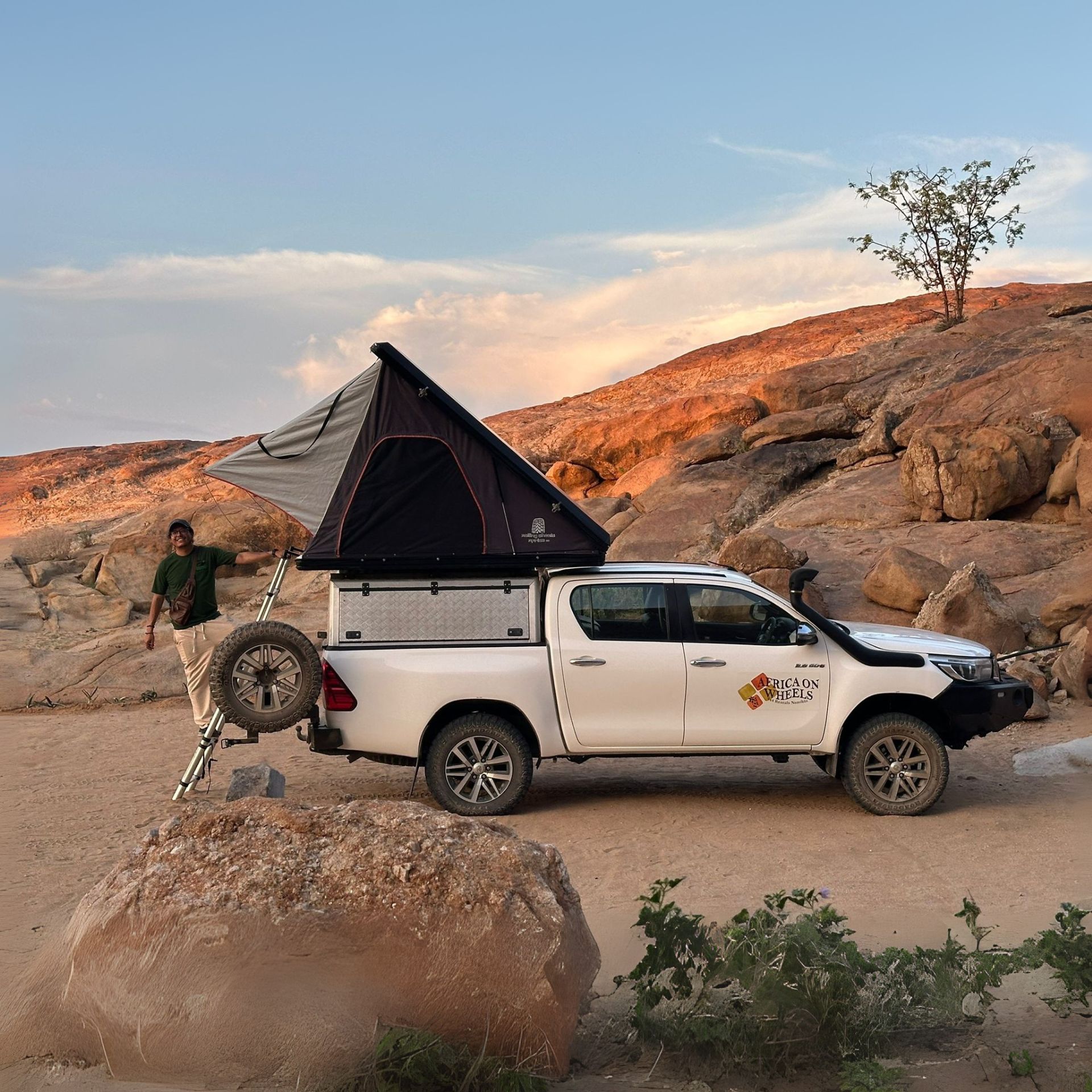More than keeping animals safe, wildlife sanctuaries all over Africa take care of showing us the bigger picture.
Old lady is one of the shyest cheetahs at the Namibian Cheetah Conservation Fund 300km north of Windhoek. With a bit over 13 years, she barely moves and is quite distant from the other animals living here. She also requires a bit of special care by the volunteers and most of the time, she is kept apart in order to avoid conflict. However, Old Lady is not like any other cheetah living at this wildlife sanctuary. She is completely blind, misses a portion of her ear and was kept in captivity by a local farmer for a very long time. In addition, Old Lady forgot how to hunt and if she is left back in the wild, she would not last a day or two. Her story showed me why is so important to keep wildlife sanctuaries alive.
But she is not the only case with such a sad story. Dominic and Hans are two male cheetahs living next to Old Lady. They were captured when they were little cubs and kept in captivity until their owners decided to simply abandon them. They never learnt how to hunt and nobody knows what happened to their families – although staff from the conservation fund think they were hunted for pleasure years ago. Today, Hans, Dominic, Old Lady and more than 20 other cheetahs have been rescued. They all live at the Cheetah Conservation Fund and will probably stay there for the rest of their lives.
Learn everything about safaris in my “safari only” section
Read more: Which are the best national parks in Zambia
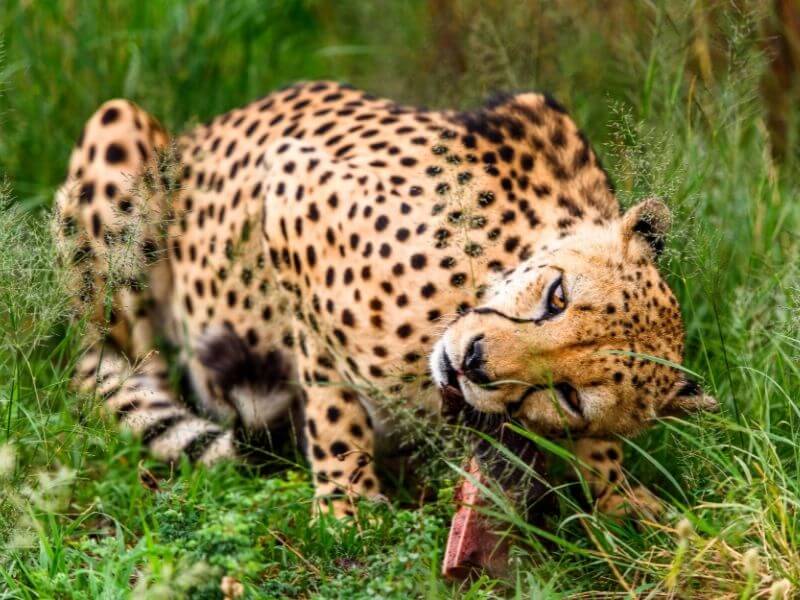
Teaching the importance of animal conservation
With one of the fastest growing populations in the world, Africa is constantly changing. This is not the continent of lion pets, people transporting goods on elephants or naked abiogenies negotiating at markets. It is a region of startups, a constant growing economy and people urging for education. Today Africa is home for 1,2 billion people, but experts agree that by 2050, the population in the continent will increase up to 10 billion. This means more natural resources will be consumed faster than ever, land will be taken for human development and animals roaming free all over the continent will become more and more endangered.
So far, national parks are doing a great job in avoiding conflict between animals and humans, as well protecting wildlife. However, once animals leave national parks and get in the hands of humans, the work of a national park is very limited and only a wildlife sanctuaries can take care of them and give them a second life.
The Cheetah Conservation Fund was not the only wildlife sanctuary I visited in Namibia. I also visited the famous N/a’an ku sê Wildlife Sanctuary, as well private farms where animals live in a more free environment, and of course, several national parks, where animals can even cross between countries and rangers take care of issues like poaching, illegal hunting or animal captivity.
With all these organizations having the same goal in mind, I wanted to take a deeper look into wildlife sanctuaries and find out what makes them so important.
Read more: The ultimate packing list for a camping trip in Namibia
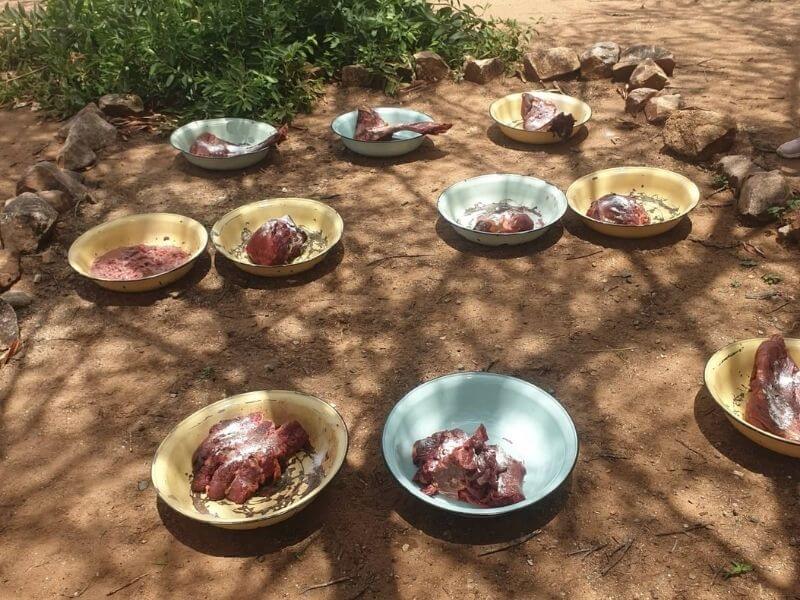
Why do we need wildlife sanctuaries?
Visiting N/a’an ku sê Wildlife Sanctuary for the first time is a little bit odd. Located 50 km north west of Windhoek, this popular stop for travelers doing overland tours in Namibia looks more like a very luxurious private lodge than a wildlife sanctuary. Travelers can rent huge private villas surrounded by wild animals, take a swim at the pool while giraffes pass next by or order an expensive glass of scotch while watching the sunset.
This does not sound like the typical wildlife sanctuary, where leisure and conservation are worlds apart. This looks more like a grey zone where tourism meets conservation. However, N/a’an ku sê was not made to make money. Like most private sanctuaries worldwide, they fundraise to ensure the animals are cared for and they can grow their facilities – never for their founders to get rich.
“We do not receive any government funding and are solely reliant on generous donations and the time of volunteers to continue our vital work”, states N/a’an ku sê’s website.
After exploring deeper into sanctuary myself, I could also see how every cent they get, they invest it back. N/a’an ku sê takes care of several dozen of animals, while the Cheetah Conservation Fund can only take care of a few. Furthermore, with generous donations from celebrities like Angelina Jolie, N/a’an ku sê became popular and their luxurious facilities create on the long run more awareness into conservation.
Injured baboons, orphaned leopards and lions have found a second home in this sanctuary and even though N/a’an ku sê’s main goal is to release the animals after they recover, they also understand that most abused species can’t return into the wild and should be protected until they die – a task national parks and private farms simply can’t do.
Read more: What Are The Top Safari Experiences In Africa
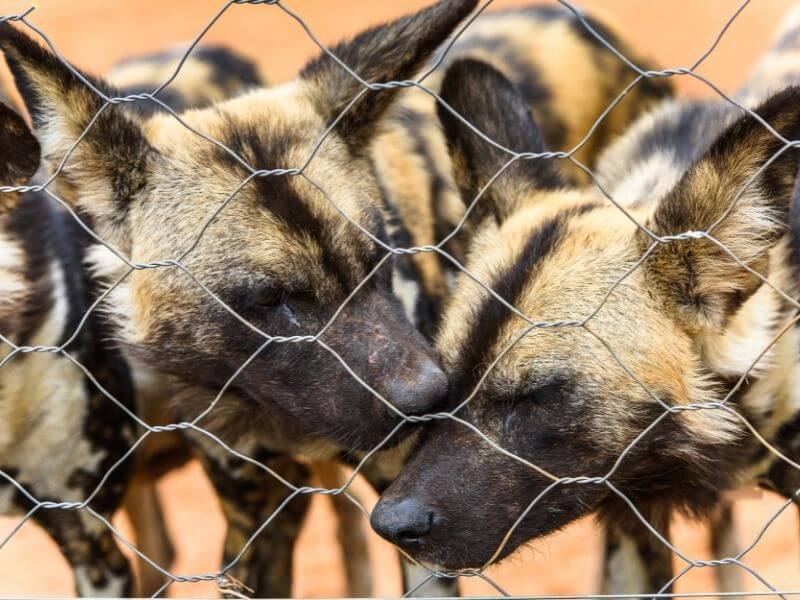
Conservation at a high cost
Protecting wildlife has a very high cost. According to the African Wildlife Foundation, the average annual cost of protecting one rhino for a full year can go up to 14.000 USD – with the cost of an elephant going as high as 100.000 USD.
This money is collected through projects, single donations or voluntary work, where you not only donate your time, but also have to pay a high cost to be part of it. If you want to participate for a volunteering program at N/a’an ku sê or at the Cheetah Conservation Fund, expect to pay up to 5000 USD for a month.
Keeping a sanctuary alive costs a lot of money, and without our donations, these places would not exist.
Find out more about the N/a’an ku sê Wildlife Sanctuary voluntary program here or the Cheetah Conservation Fund voluntary program here.
Read more: How To Plan A Road Trip In Namibia

The ethics of visiting a wildlife sanctuary in Namibia
Wildlife sanctuaries have lately found themselves in a bit of a grey zone and with the popularity of the Netflix series, Tiger King, many asked themselves when does this grey zone begins and when should it end.
Sanctuaries are not made for people to interact with wildlife. They exist to provide care to neglected and abused captive animals for the rest of their lives. Neither at the Cheetah Conservation Fund or at N/a’an ku sê we were able to touch the animals. Additionally, while animals are being feed in public, visitors are just observers of this activity and can’t interact in any way.
I was able to see lions, leopards, wild dogs and cheetahs, but all of them from several meters away. It’s true, on a first glimpse I was able to spot a lot of similarities between a zoo and a conservation fund, but once you get more involved with their projects, it is also easy to notice that the backstories of the animals come in first place and the animals are not there for display.
It is important to show people that these are not zoos, but places that rescue. Without sanctuaries, we would have to euthanize most of these species and they would simply die. People don’t go to a wildlife sanctuary to see cheetahs in their prime running at high speeds or spot lions roaring and acting like in the wild, we visit these places to better understand our impact in wildlife and support a project that gives animals a second life.
Read more: Which Are The Most Unique Places To Visit In Namibia
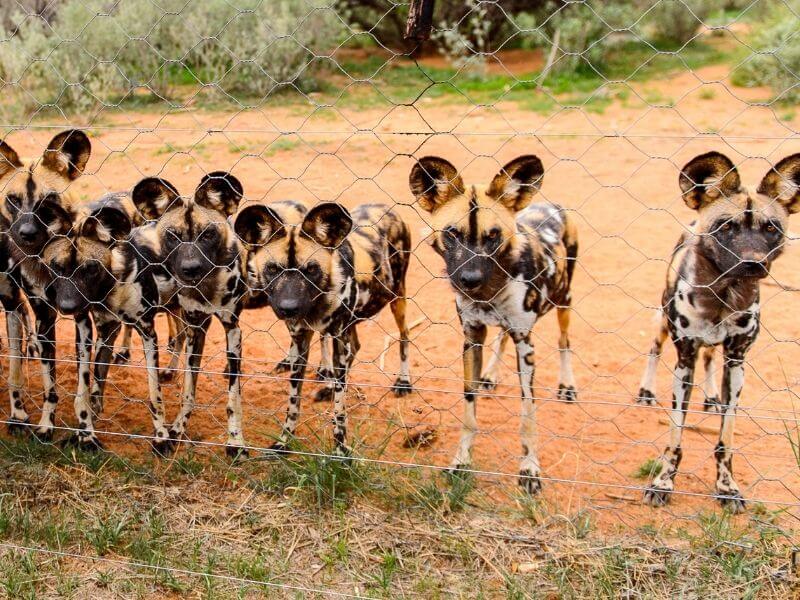
Read more: Turning animal poachers into wildlife conservationists
Planning a trip to Namibia independently is fun. However, if you want to arrange everything with tour operators beforehand from the comfort of your home. SafariBookings is the best platform for it.
They have the largest database of tour operators in Africa and you can simply send a request and negotiate a tour and a price directly with the operator. You don’t have to pay any additional fees.
These are some of the most popular tours in Namibia at SafariBookings
Read more: The importance of reintroducing animals in national parks


